Lissa Rankin, MD at TEDxAmericanRiviera 2012
|
Is there scientific proof we can heal ourselves? Lissa Rankin, MD at TEDxAmericanRiviera 2012
0 Comments
Published on 29 Jun 2013 Spaceweather 102: http://youtu.be/JpIuXPmSalk How to Watch the Sun: Spaceweather 101 - http://youtu.be/ld5ecZuHECA The REAL Climate Changer: http://youtu.be/_yy3YJBOw_o Ice Age Soon? http://youtu.be/UuYTcnN7TQk An Unlikely but Relevant Risk - The Solar Killshot: http://youtu.be/X0KJ_dxp170 Original music by NEMES1S : http://www.suspicious0bservers.org/shop/ [Get NEMES1S Music!] : http://www.soundclick.com/nemes1s Animations and Visual Effects by Xaviar Thunders [Check him out on YouTube] REPEAT LINKS: June 29, 2013 – SPACE – Launched 36 years ago, the Voyager 1 spacecraft speeds at a rate of about a million miles a day, entering a bizarre and mysterious region more than 11 billion miles from Earth that scientists are struggling to make sense of. It’s a region where the fierce solar winds have all but vanished and pieces of atoms blasted across the galaxy by ancient supernovae drift into the solar system.
The NASA probe is causing scientists to question some long-standing theories on the nature of our solar system and life beyond its cold dark edge dubbed the “magnetic highway” –a newly discovered area of the heliosphere, the vast bubble of magnetism that shields the solar system from deadly cosmic rays. Scientists had long envisioned this outermost layer of the solar systems, the heliosheath, to be a curved, distinct boundary separating the solar system from the rest of the Milky Way where three things would happen: The sun’s solar winds would become quiet; galactic cosmic rays would bombard Voyager from every angle; and the direction of the dominant magnetic field would change significantly because it would be coming from interstellar space, not the sun. “The models that have been thought to predict what should happen are all incorrect,” said physicist Stamatios Krimigis of the Johns Hopkins University Applied Physics Laboratory. The latest readings from Voyager's instruments support none of those suppositions, scientists said. Voyager has reported solar winds suddenly dropped by half, while the strength of the magnetic field almost doubled, and those values then switched back and forth five times before they became fixed. “The jumps indicate multiple crossings of a boundary unlike anything observed previously,” a team of Voyager scientists wrote in one a study. Voyager did detect the expected increase in galactic cosmic rays but found at times the rays were moving in parallel instead of traveling randomly. “This was conceptually unthinkable for cosmic rays,” Stamatios Krimigis, a solar physicist at the Johns Hopkins University Applied Physics Laboratory in Laurel, Md., told the Los Angeles Times. “There is no cosmic ray physicist I know who ever expected that they would not all be coming equally from all directions.” Whether Voyager 1 — which launched in 1977 — has truly left the solar system has been a matter of some debate, because scientists have come up with competing theories on what constitutes an outermost edge. “We’re not free yet,” Krimigis said. “This is a new region that we didn’t know existed. We have no road map, and we’re waiting to see what’s going to happen next.” –Daily Galaxy http://theextinctionprotocol.wordpress.com/2013/06/29/great-barriers-do-exist-in-space-and-voyager-may-have-reached-it-now-what/ STRONG GEOMAGNETIC STORM IN PROGRESS: A strong (Kp=7) geomagnetic storm is in progress on June 28-29 as Earth passes through a region of south-pointing magnetism in the solar wind. The storm has sparked Northern Lights photographed in the USA as far south as Kansas. Christian Begeman sends this picture from a farm outside Hartford, South Dakota: "A clear sky allowed me to the Northern Lights dancing in southeast South Dakota around the midnight hour tonight," says Begeman. "It was quite the show." High-latitude sky watchers should remain alert for auroras in the hours ahead. Solar wind conditions continue to favor geomagnetic activity. POSSIBLE EARTH-DIRECTED CME: When the current spate of geomagnetic storms is over, another could follow close on its heels. A coronal mass ejection (CME) which occurred during the early hours of June 28th, when magnetic filaments around sunspot AR1777 erupted, is expected to deliver a glancing blow to Earth's magnetic field late on June 30th or early on July 31st. . The explosion registered approximately C4 on the Richter Scale of Solar Flares. Because the CME is not heading squarely toward Earth, there is still a chance that it will miss. NOCTILUCENT CLOUDS: For the past few nights, evening sky watchers in northern Europe and Canada have seen bright noctilucent clouds hovering at the edge of space. Alan Dyer photographed these electric-blue waves approximately 70 km above a bank of thunderstorms in Gleichen, Alberta: "An interesting phenomenon in this display was the fringe of red at the upper edge of the thunderclouds, which contrasted nicely with the light blue color of the NLCs," says Dyer.
2013 is shaping up to be a good year for NLCs. The clouds surprised researchers by appearing early this year, and many bright displays have already been recorded. Once confined to the Arctic, NLCs have been sighted in recent years as far south as Utah, Colorado, and Nebraska. They might spread even farther south in 2013. Observing tips: Look west 30 to 60 minutes after sunset when the sun has dipped 6o to 16o below the horizon. If you see luminous blue-white tendrils spreading across the sky, you've probably spotted a noctilucent cloud. www.spaceweather.com EARTH-DIRECTED CME: June 28th began with a double solar flare. Magnetic fields around sunspots AR1777 and AR1778 erupted in quick succession between 0130 UT and 0345 UT, producing two C-class (C4, C7) flares. A CME emerging from the sprawling blast site appears to be heading for Earth, although not squarely. An analysis of this complicated event is still underway. It is possible that Earth's magnetic field will receive a glancing blow from the CME on or about June 30th. The impact could cause minor geomagnetic storms. SOLAR OBSERVATORY LAUNCHED: NASA's newest space telescope, a unique solar observatory named "IRIS", is orbiting Earth today following a successful launch on June 27th at 7:27 pm PDT. Leaving from the Vandenberg Air Force Base in California, an Orbital L-1011 aircraft carried IRIS inside a Pegasus XL rocket out over the Pacific Ocean, where the rocket separated from the belly of the airplane and blasted into space. The rocket's exhaust created a beautiful sunset display along the central California coast: Mike O'Leary took the picture from El Cajon, CA. "Sunlight passing through ice crystals formed from the exhaust of the Pegasus rocket created a beautiful twilight effect." According to another onlooker, Thom Peck of Poway, California, the iridescent colors lasted until at least 9:30 pm PDT.
IRIS is on a mission to study the "interface region," a layer of the sun's atmosphere where most solar ultraviolet radiation is generated. Researchers are keen to study the interface region because it is probably the energy source for the sun's mysteriously-hot outer corona. A good way to understand IRIS's uniqueness is to compare it to NASA's Solar Dynamics Observatory (SDO). While SDO sees the entire sun, IRIS going to look closely at only 1 percent of the sun's surface, discerning features as small as 150 miles across. "IRIS almost acts as a microscope to SDO's telescope," explains mission manager Jim Hall. "IRIS will show the solar chromosphere in more detail than has ever been observed before," says Adrian Daw, deputy project scientist. "My opinion is that we are bound to see something we didn't expect to see." www.spaceweather.com NASA finds only 10% of potentially threatening near-Earth objects: pleads to public for help27/6/2013 June 27, 2013 – SPACE – NASA said the 10,000th near-Earth object (NEO) has been discovered using the Pan-STARRS-1 telescope in Hawaii. Astronomers spotted asteroid 2013 MZ5 on the night of June 18, marking a significant milestone for the NEO search. The space agency said 90 percent of all NEOs discovered were first detected by NASA-supported surveys. “But there are at least 10 times that many more to be found before we can be assured we will have found any and all that could impact and do significant harm to the citizens of Earth,” said Lindley Johnson, program executive for NASA’s Near-Earth Object Observations Program at NASA Headquarters, Washington. In order to be classified as an NEO, a comet or asteroid must approach Earth at an orbital distance to within about 28 million miles. They range in size from as small as a few feet to as large as 25 miles for the largest NEO. Asteroid 2013 MZ5 is about 1,000 feet across and will never be close enough to Earth to be considered potentially hazardous.
“The first near-Earth object was discovered in 1898,” said Don Yeomans, long-time manager of NASA’s Near-Earth Object Program Office at the Jet Propulsion Laboratory in Pasadena, Calif. “Over the next hundred years, only about 500 had been found. But then, with the advent of NASA’s NEO Observations program in 1998, we’ve been racking them up ever since. And with new, more capable systems coming on line, we are learning even more about where the NEOs are currently in our solar system, and where they will be in the future.” About 10 percent of the 10,000 NEOs discovered are larger than six-tenths of a mile, which is roughly the size that could produce global consequences if one struck Earth. However, NASA says its program has found that none of these larger NEOs currently pose an impact threat. NASA said scientists predict there to be about 15,000 NEOs that are one-and-a-half football fields in size, or 480 feet. There could be more than a million NEOs that are about one-third of a football field in size. An NEO hitting Earth would need to be about 100 feet or larger in order to cause significant damage in a populated area. The space agency said less than one percent of the 100-foot-sized NEOs have been detected. “These days we average three NEO discoveries a day, and each month the Minor Planet Center receives hundreds of thousands of observations on asteroids, including those in the main-belt,” said Tim Spahr, director of the Minor Planet Center. “The work done by the NASA surveys, and the other international professional and amateur astronomers, to discover and track NEOs is really remarkable.” Earlier this month, NASA announced a grand challenge focused on finding all asteroid threats to human populations. This “Great Challenge”is to ask citizen scientists, along with industry professionals, to focus on detecting and characterizing asteroids and learn how to deal with potential threats. “We will also harness public engagement, open innovation and citizen science to help solve this global problem,” said NASA Deputy Administrator Lori Garver. The space agency also invited industry and potential partners to offer up some ideas on accomplishing NASA’s goals to locate, redirect and explore an asteroid. –Red Orbit A new and unique solar observatory is poised to leave Earth today (27 June 2013). IRIS (the Interface Region Imaging Spectrograph) will blast off from California's Vandenberg Air Force Base onboard a Pegasus XL rocket at 7:27 p.m. PDT. A modified L-1011 airliner will carry the rocket to 39,000 feet over the Pacific Ocean where the plane will drop the Pegasus to begin the launch. Engineers mount the Pegasus to the belly of the Orbital Sciences L-1011. NASA's Solar Dynamics Observatory (SDO) is known as the finest solar telescope ever launched into space. IRIS is equally capable, but in its own way. "IRIS almost acts as a microscope to SDO's telescope," explains mission manager Jim Hall. While SDO sees the entire sun, IRIS going to look closely at about 1 percent of the sun's surface, discerning features as small as 150 miles across.
IRIS will pay special attention to a thin layer of the sun's atmosphere called the "interface region" where most of the sun’s ultraviolet emission is generated. Researchers are keen to study this layer because it is probably the energy source for the sun's mysteriously-hot outer corona. "IRIS will show the solar chromosphere in more detail than has ever been observed before," says Adrian Daw, deputy project scientist. "My opinion is that we are bound to see something we didn't expect to see." Stay tuned! www.spaceweather.com This 'Spirit Science' video contains much information which is controversial. Watch the video with an open mind and take from it only what resonates with you. Messenger Spirit Uploaded on 31 Jan 2012
Today we bring you something special! Before you lies the entire collection of the Human History story which was previously spread across 5 episodes of Spirit Science! This special featured video is brought to you by a man named Andrew Golden, who has compiled all of these videos in 1080p for your viewing pleasure! Get out some popcorn and dim the lights, this is gonna be good! - - - - - - - - - - - - - - - - Our history is not what we think! Over the past few thousand years, we have warped our own history. Our versions of the past has been mistranslated, changed, altered and skewed to fit our understanding of reality, and completely left out many things that we cannot explain. Today, we are going to look at an alternate version of our history, a version that was recorded across many ancient tablets and artifacts throughout time, which have only recently been uncovered. This story may be a little cosmic, it may not even all be true, but you will have to decide that for yourself. Based on the work of Drunvalo Melchizidek in the Ancient Secret of the Flower of Life. Made with Love by many, many beautiful people in the credits of the movie. Enjoy everyone! We love you! Over the weekend, sky watchers around the world witnessed an unusually bright and beautiful full moon--a "supermoon." Elias Chasiotis photographed the swollen orb rising over the ancient Greek temple of Poseidon at Sounion, Greece: The supermoon was as much as 14% bigger and 30% brighter than other full Moons of 2013. "Perigee moon" is the scientific term for the phenomenon. Full Moons vary in size because of the oval shape of the Moon's orbit. The Moon follows an elliptical path around Earth with one side ("perigee") about 50,000 km closer than the other ("apogee"). Full Moons that occur on the perigee side of the Moon's orbit seem extra big and bright. On June 23rd, the Moon became full at 11:34 UT, only 23 minutes after perigee--a near-perfect coincidence.
More spectacular pictures of the super-perigee Moon may be found in the realtime photo gallery. Browse and enjoy. www.spaceweather.com RADIATION STORM: A minor solar proton storm is underway around Earth. Registering "S1" on NOAA storm scales, the storm is not yet intense enough to have a significant effect on satellites or air travelers. It is, however, trending upward, so the situation could change. M-CLASS SOLAR FLARE: Sunspot AR1778 produced an impulsive M2-class solar flare on June 23rd at 20:56 UT. NASA's Solar Dynamics Observatory recorded the extreme ultraviolet flash: [go to http://spaceweather.com/ to watch brief video of flash]
The eruption flung material away from the blast site, but the debris does not appear to be heading toward Earth. Except for the effects of the UV flash, which created a short-lived wave of ionization in Earth's upper atmosphere, this flare was not geo-effective.
More flares could be in the offing. In addition to AR1778, sunspots AR1775 and AR1776 have 'beta-gamma' magnetic fields that harbor energy for significant eruptions. NOAA forecasters estimate a 40% chance of M-flares and a 5% chance of X-flares on June 24th. www.spaceweather.com This weekend's full Moon is a "supermoon," as much as 14% bigger and 30% brighter than other full Moons of 2013. Even on Friday night, 36 hours before maximum illumination, the Moon already looked super: David Hoffmann took the picture on June 21st from Ashland, Oregon. "The Moon will not be as close to Earth again until August 2014," he says.
The scientific term for the phenomenon is "perigee moon." Full Moons vary in size because of the oval shape of the Moon's orbit. The Moon follows an elliptical path around Earth with one side ("perigee") about 50,000 km closer than the other ("apogee"). Full Moons that occur on the perigee side of the Moon's orbit seem extra big and bright. On June 23rd, the Moon becomes full at 11:34 UT, only 23 minutes after it reaches perigee. This near-perfect coincidence makes the Moon "super." It's true that a perigee full Moon brings with it extra-high "perigean tides," but according to the National Oceanic and Atmospheric Administration this is nothing to worry about. In most places, lunar gravity at perigee pulls tide waters only a few centimeters (an inch or so) higher than usual. Local geography can amplify the effect to about 15 centimeters (six inches)--not exactly a great flood. In other words, don't worry. Just enjoy the super moonlight. www.spaceweather.com A fast-moving (~600 km/s) stream of solar wind is buffeting Earth's magnetic field this weekend. Reports of high-latitude auroras are few, however, because of the nearly full Moon and midnight sun around the Arctic Circle. NOAA forecasters estimate a 40% chance of polar geomagnetic storms on June 22nd. www.spaceweather.com
SUMMER SOLSTICE: Today is the first day of northern summer. At 1:04 a.m. EDT on June 21st, the sun reached its highest point on the celestial sphere (declination = +23.5o) marking the start of summer in the northern hemisphere, and winter in the south. Happy solstice! SOLSTICE SOLAR FLARE: This morning, June 21st at 03:16 UT, the sun itself marked the solstice with an M2-class solar flare from sunspot AR1777. NASA's Solar Dynamics Observatory photographed the extreme ultraviolet flash and a plume of material flying out of the blast site: As sunspots go, AR1777 is neither large nor apparently menacing, yet it has been crackling with flares for days. Before it rotated over the sun's eastern limb on June 20th, it unleashed a series of farside flares and CMEs. Today's explosion was not Earth directed, but future explosions could be as the sun's rotation continues to turn AR1777 toward our planet. NOAA forecasters estimate a 30% chance of M-flares and a 5% chance of X-flares during the next 24 hours.
www.spaceweather.com Tonight, June 20, 2013, is the shortest night of the year in the Northern Hemisphere. The northern summer solstice is at 1:04 a.m. on the 21st EDT and 10:04 p.m. on the 20th PDT.
|
QUICK INFO
Author:
_Messenger Spirit This section is for interesting items which are brought to my attention but which do not merit a separate article.
I welcome your comments, questions or suggestions on any topics you wish to contribute to this section. Please submit these on the Contact and Feedback Form PLEASE DO NOT SUBMIT COMMENTS ON THE FORM WHICH APPEARS UNDER ITEMS ON 'QUICK INFO'; THIS SYSTEM IS NOT WORKING. Categories
All
Archives
July 2024
|
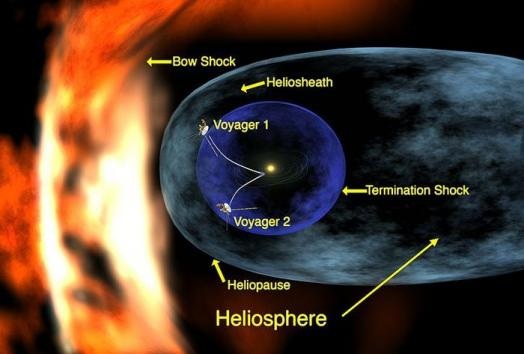
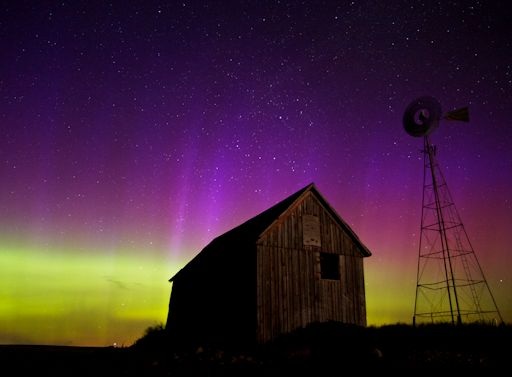
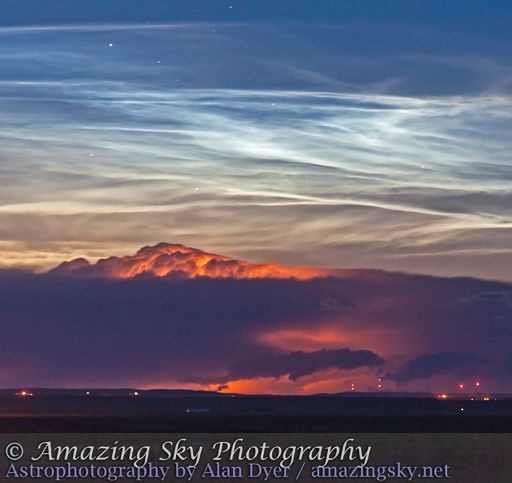
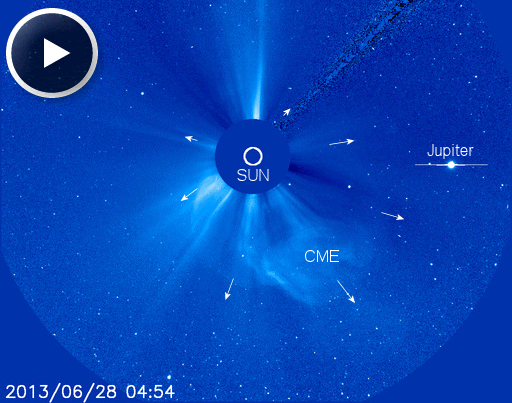

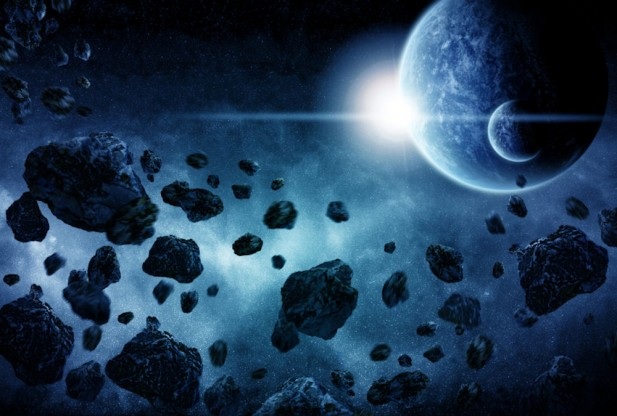
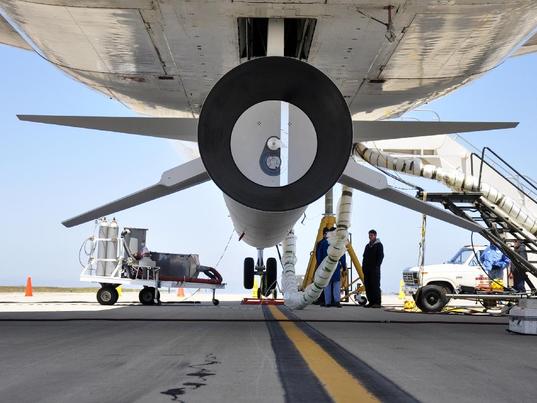
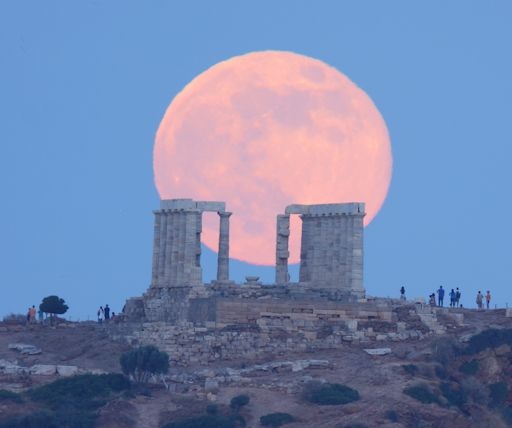
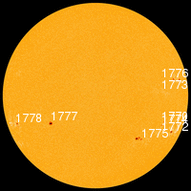
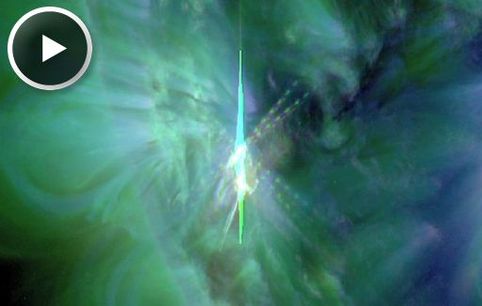
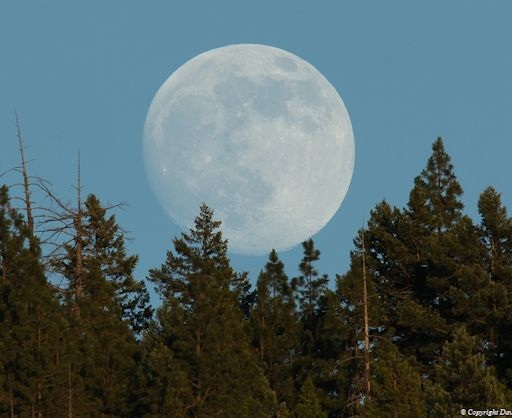

 RSS Feed
RSS Feed